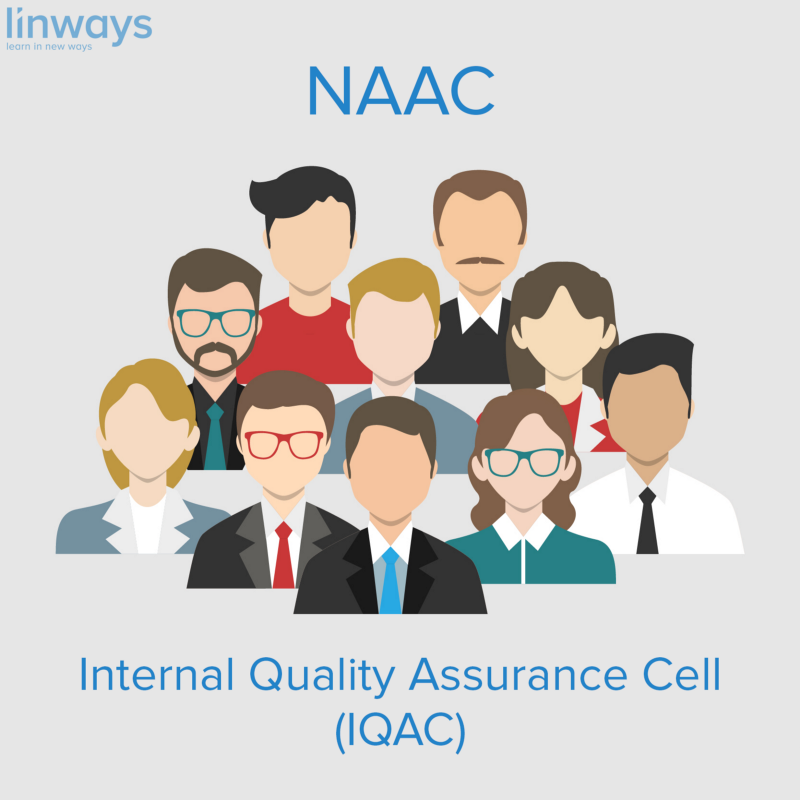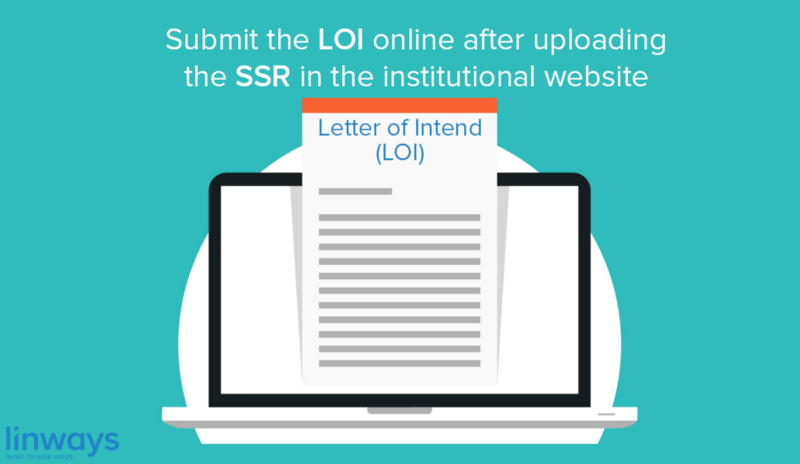
Until now through this blog series, we have discussed about NAAC’s accreditation process, Self Study Report (SSR), accreditation parameters, and accreditation outcomes.
This time we are going to discuss something that is not just mandatory for NAAC, but desirable for all types and kinds of institutions; actually education as a whole- Assurance of quality. It is one of the core values of organizations like National Board of Accreditation (NBA), NAAC, ABET etc.
We have previously talked about quality assurance and it’s importance in education while during the NBA blog series. So let’s skip going in depth into that. But we should not take this lightly.
The more steps there are to assure quality, the better education it will be.
Before looking into the NAAC’s quality control measures and practises, let’s see what a Letter Of intent (LOI) is.
Letter Of Intent (LOI)
As we saw in a previous blog of this series, the institutions need to submit the Letter of Intent (LOI) after uploading the Self-study Report (SSR) on the institutional website.
The LOI contains details of the institution/university, the courses it offers, and other information. The LOI for NAAC is like the pro-forma for National Board of Accreditation (NBA). It provides all the necessary information for the NAAC about the institution, and can decide on the eligibility of the institution for accreditation.
While submitting the LOI, the following documents (if applicable) have to be uploaded with it in ‘PDF’ format.

Colleges
- Latest letter of affiliation from the parent university
- UGC 12B recognition certificate
- Latest grant certificate
- Latest recognition/approval letter from a regulatory authority, if the institution is offering professional courses for e.g., AICTE, NCTE, DCI, etc…
- Letter from UGC regarding award and continuance of autonomy
- Letter from UGC regarding award of CPE
- Suggestive format for Affiliation letter from the Universities
Universities
- Latest recognition / approval letter from a regulatory authority, if the HEI is offering professional courses for e.g., AICTE, NCTE, DCI, etc…
- UGC 12B recognition certificate
- Latest grant certificate
The institution can submit the SSR within two weeks of acceptance of LOI / IEQA.
The Internal quality assurance cell (IQAC)
IQAC is one of the most important step towards a NAAC accreditation.
According to NAAC, the primary aim of IQAC is
- To develop a system for conscious, consistent and catalytic action to improve the academic and administrative performance of the institution.
- To promote measures for institutional functioning towards quality enhancement through internalization of quality culture and institutionalization of best practices.
The IQAC is primarily to develop a system for conscious, and consistent improvement in the overall performance of institution. During the post-accreditation period, it should channel all efforts and practices of the institution towards promoting its academic excellence and assuring educational quality.
Functions of IQAC
Some of the functions expected of the IQAC are:
- Development and application of quality parameters for various academic activities of the institution;
- Facilitating the creation of a learner-centric environment that offers quality education;
- Faculty contributions to adopt the necessary knowledge and technology for better teaching and learning process;
- Arrangements for feedback and responses from students, parents and other stakeholders on quality-related matters;
- Dissemination of information on various quality parameters;
- Organization of inter and intra institutional workshops, seminars on quality related themes and promotion of quality circles;
- Documentation of the various programmes/activities leading to quality improvement;
- Acting as a part of the Institution to coordinate quality-related activities and best practices;
- Development and maintenance of institutional database using Management Information System (MIS) to maintain /enhance the institutional quality;
- Development of quality culture in the institution;
- Preparation of the Annual Quality Assurance Report (AQAR) as per guidelines and parameters of NAAC, to be submitted to NAAC.
Strategies of IQAC
IQAC can use various mechanisms, and procedures for
- Ensuring efficient and progressive performance of academic and administrative tasks;
- Assuring the quality of academic and research programmes;
- Ensure access and affordability of academic programmes for various sections of society;
- Optimization and implementation of modern teaching and learning methods;
- Creating a credibility for evaluation procedures;
- Ensuring the adequate and proper access of support and services;
- Sharing of research findings and networking with other institutions in India and abroad.
Composition of the IQAC
IQAC is created under the chairmanship of the head of the institution, along with the heads of important academic and administrative units, a few teachers, and a few distinguished educationists and representatives of local management and stakeholders.
The composition of the IQAC is usually as follows:
- Chairperson: Head of the Institution
- A few senior administrative officers
- Three to eight teachers
- One member from the Management
- One/two nominees from local society, students and alumni
- One/two nominees from employers /industrialists/stakeholders
- One of the senior teachers as the co-ordinator/Director of the IQAC
The composition of the IQAC will depend on the size and complexity of the institution. It helps the institutions in planning and monitoring. IQAC also gives stakeholders or beneficiaries participation in the institution’s quality enhancement activities.
“The membership period of the nominated members are two years. The IQAC should meet at least once in every quarter. The agenda, minutes and ‘Action Taken’ reports all should be documented with official signatures and maintained electronically in a retrievable format.” — says NAAC
The members of the IQAC will have the responsibilities of generating and promoting awareness in the institution.
Institutions need to be careful while selecting the members of the IQAC.
NAAC advices to choose persons from various backgrounds who have earned respect and excellence in their teaching and research. Moreover, they should be aware of the nature and working of the institution. They should be known for their commitment in improving the quality of teaching and learning.
The management representative should be a person who is aware of the institution’s objectives, limitations and strengths. The local society representatives should be of high social standing and should have made significant contributions to society and in particular to education.
The quality related practices of the institution and of the IQAC are not over yet. We will discuss more about the IQAC, Institutional Eligibility for Quality Assessment (IEQA), Annual Quality Assurance Report (AQAR), their relevance, functions and practices in our next blog.




